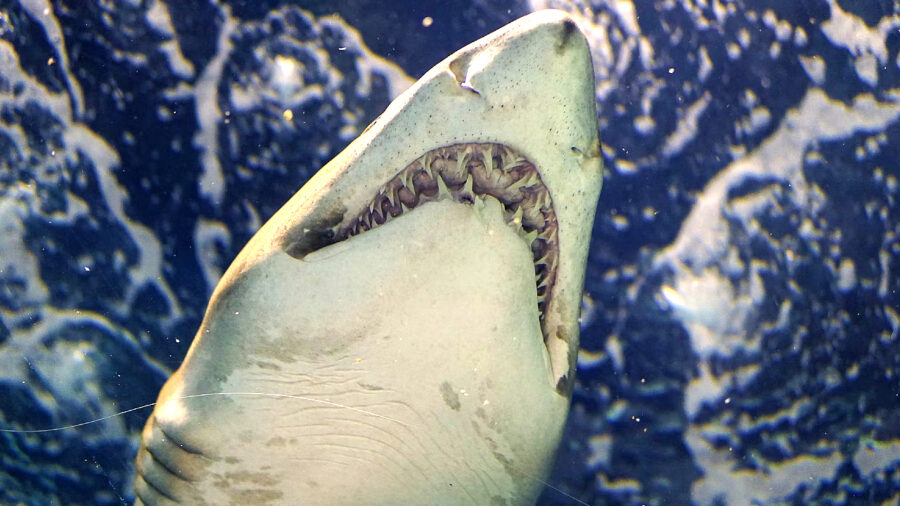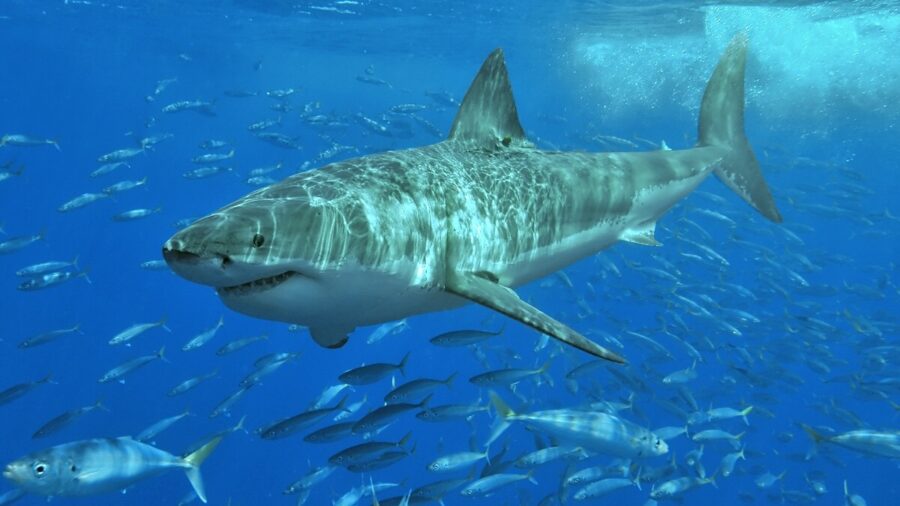Great White Sharks Are Taking Back Texas

One would think that sighting a great white shark patrolling Texas waters is just a scene from a B-production movie. However, a recent scientific report speaks of a great white shark, nicknamed LeeBeth that has been tracked all the way to the Gulf of Mexico. Before reaching this far west, LeeBeth was on a record-setting trip of 2,000 miles that made headlines.
This particular journey is raising questions about the historic presence of great white sharks in Texas waters and their potential return.
Tracking The Shark

Researchers were able to track her movements thanks to special tags attached to her during a previous encounter back in December 2023.
These tags ping researchers with the shark’s location whenever her dorsal fin breaks the surface for at least 45 seconds. Interestingly, according to Megan Winton, a research scientist from Atlantic White Shark Conservancy, LeeBeth seems to spend more time at the surface than other tagged sharks, providing a clearer picture of her path.
A Rare Occurrence

LeeBeth, which is fourteen feet long and weighs more than two thousand pounds, is unique in more ways than just journeying 2,000 miles to find itself just two hundred yards off Texas shores, as Winton continued to say that there aren’t many great white sharks of LeeBeth size and age in the North Atlantic Ocean.
Winston says, “It’s in part because it takes them a long time to get that big,” Winton explains. “The ocean’s a tough place to make a living. It’s really exciting from that perspective.”
An Increase In The Great White Shark Population

Nevertheless, the story of white sharks in Texas has two sides. Due to overfishing in the mid-20th century, especially between the 1960s and 1980s, we have witnessed a dramatic drop in their population by as much as 80 percent. On the other hand, in the late ‘90s, stricter regulations were implemented which enabled white shark resurgence.
This recovery is confirmed by recent sightings in Texas waters. Over the last decade, there has been an increase in white shark appearances in the Gulf of Mexico. Back in 2013, a tracked shark named Katherine came close to the Texas coast before it swam back into the Atlantic. More recently, in 2023, scientists documented white sharks for the first time in the Flower Garden Banks National Marine Sanctuary, just 100 miles from Galveston.
Are Texans In Danger?

These sightings have raised a question, are great whites taking over Texas? The numbers are reportedly increasing. Moreover, historical catch records suggest that the Gulf of Mexico may have once been a habitat for these predators.
What does the increase in sightings mean for beachgoers? While LeeBeth’s record-breaking journey might be fascinating for research scientists from the Atlantic White Shark Conservancy, those who frequent Texas beaches might become concerned.
LeeBeth’s Next Stop: Louisiana

Nevertheless, shark attacks remain low, and if the safety measures are followed such as staying in the shallow water, avoiding swimming alone at dawn or dusk, and others, the risk is minimized.
LeeBeth’s journey to Texas waters remains mysterious and whether there will be more great white sharks visiting the area remains to be seen. According to the Atlantic White Shark Conservancy’s Sharktivity app, LeeBeth has headed back east to Louisiana from where it came.
Source: Texas Monthly












